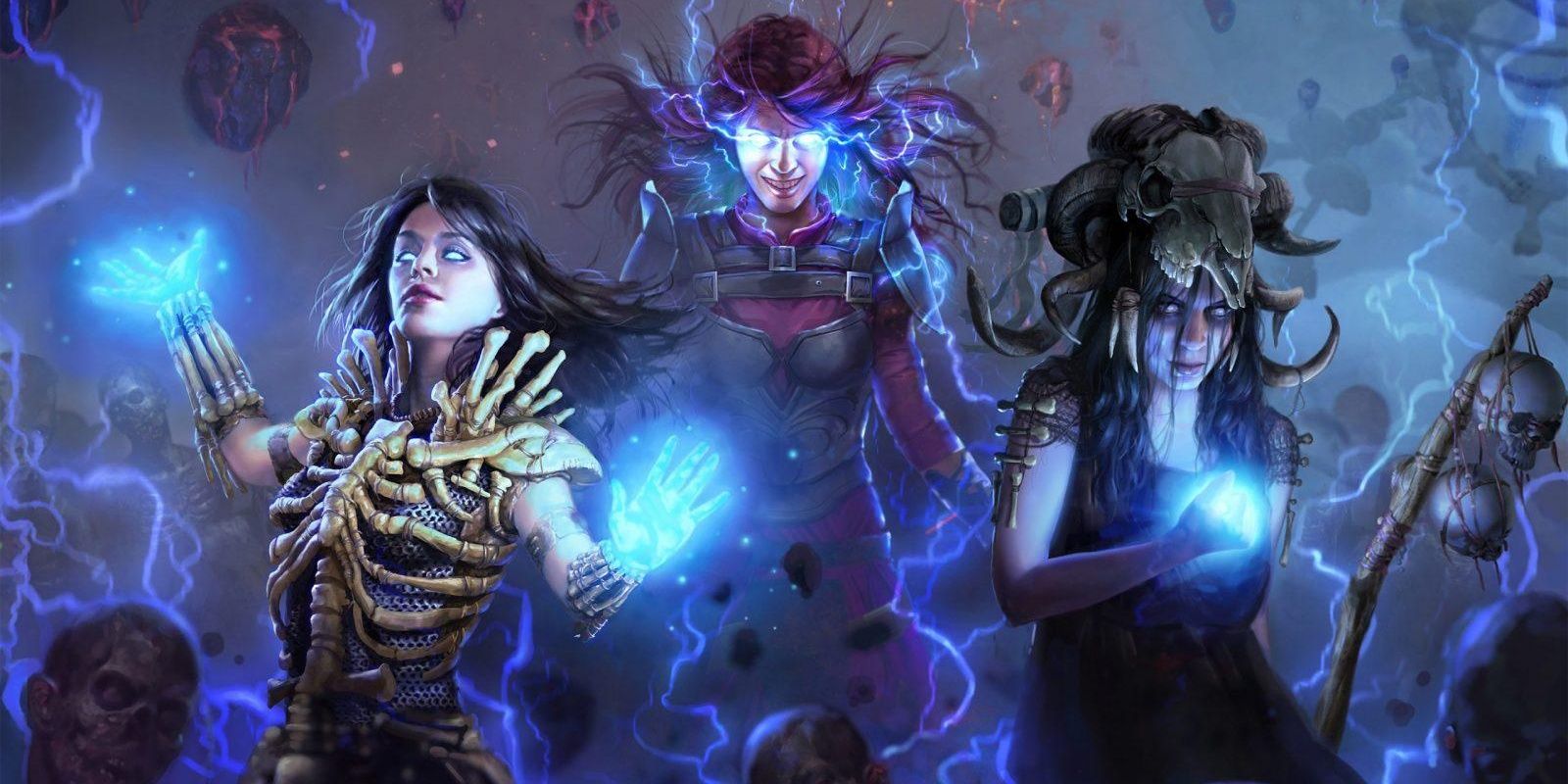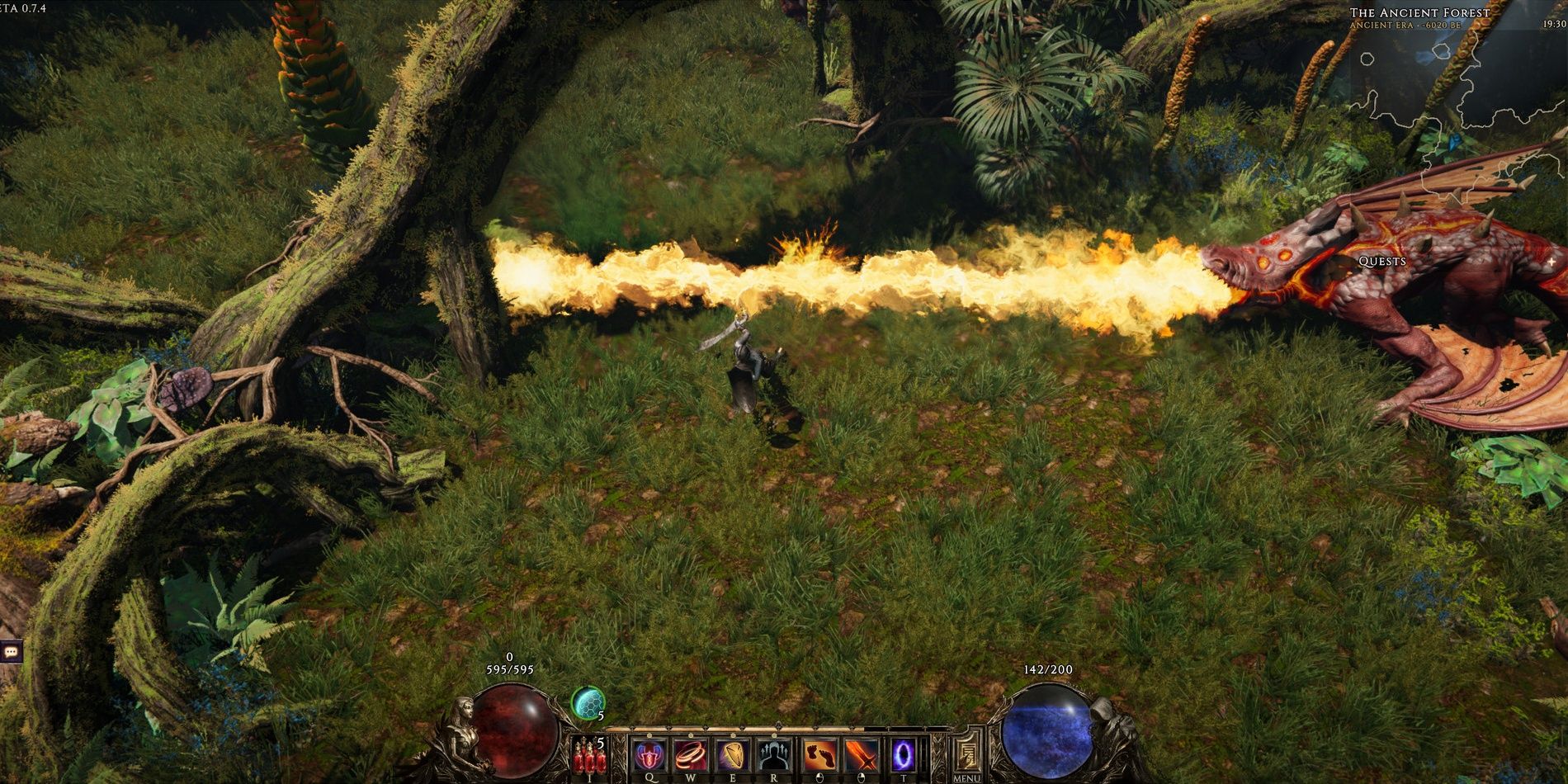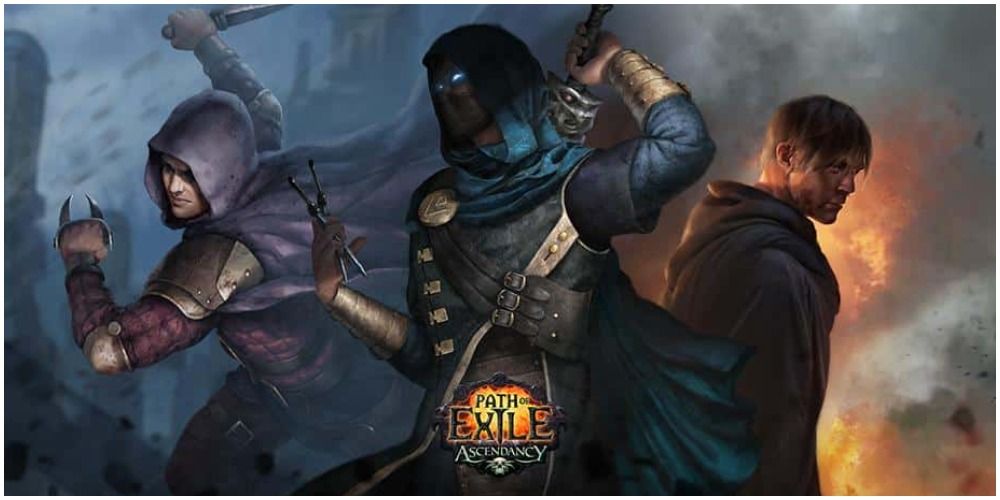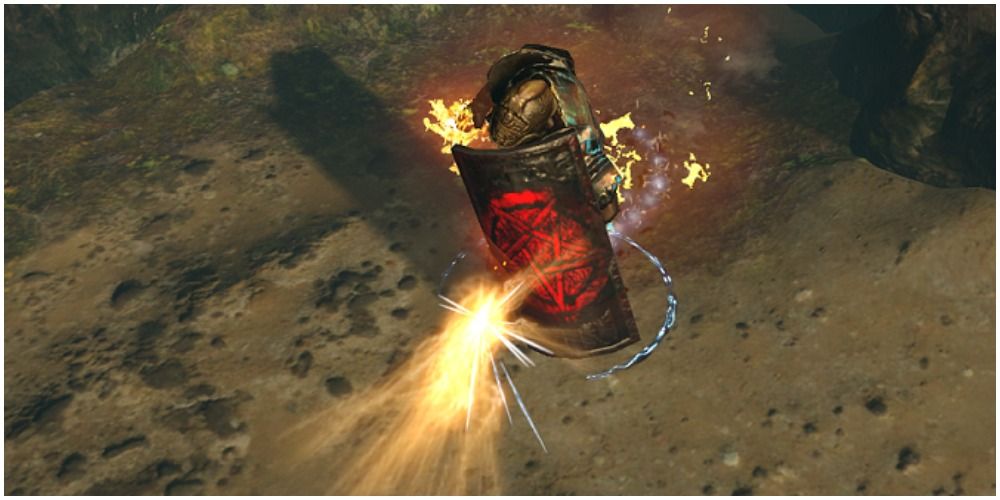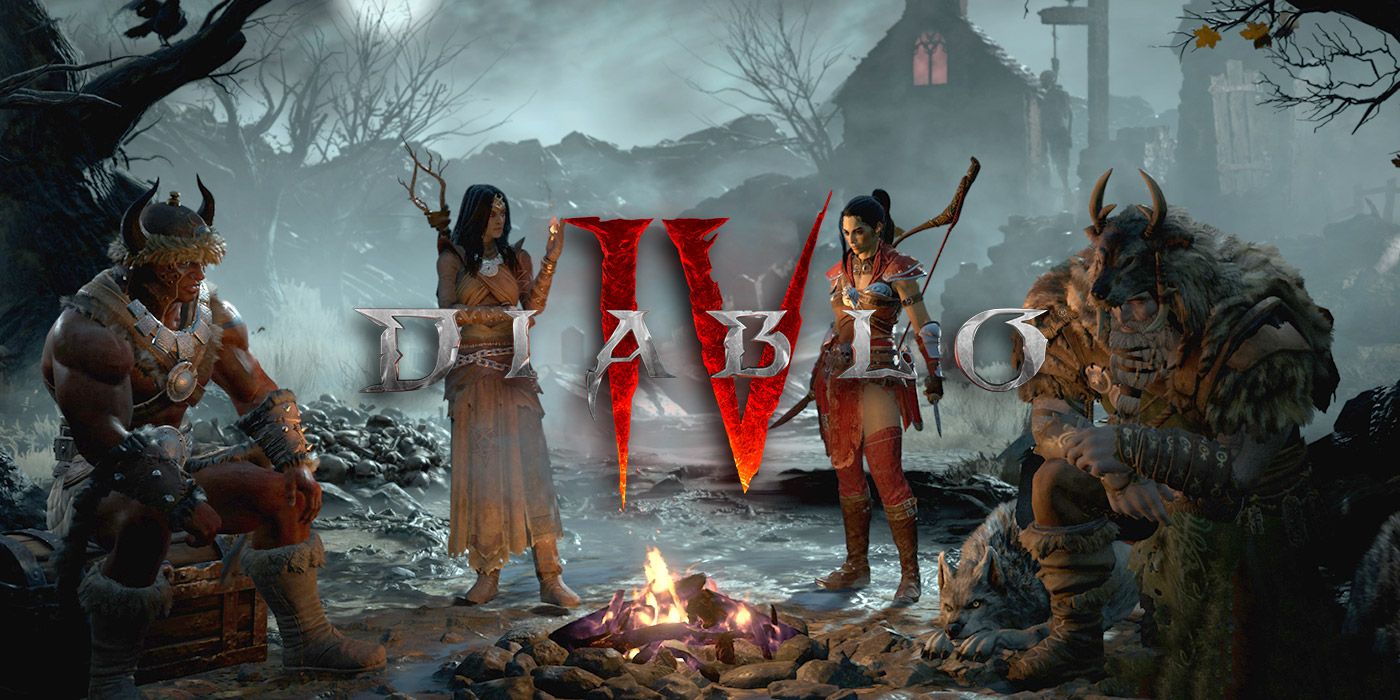In a time when fans were looking for a great ARPG like Diablo 2, Path of Exile was announced and entered beta, starting in 2011 and finally launching in 2013. GGG was small team then, and Path of Exile took many years to become a more polished game, with plenty more on the way. The time for its latest expansion is drawing nearer, and soon GGG will reveal Path of Exile: Ultimatum and more information about the anticipated PoE 2.
It's like Path of Exile was the spark that ignited the desire for ARPG fans to have more titles to play, and that's because PoE's rudimental mechanics showed this was possible in 2012 already. It maybe was too late for GGG's creative endeavor to influence the undefeatable titan that seemed to be Diablo 3 at launch, but Path of Exile has likely influenced the development of Diablo 4 in ways that are yet to be seen. And, among other games that Path of Exile has shaped for good, there is one that has slowly but steadily grown on its audience: Last Epoch.
Last Epoch and Path of Exile: Of Skill Trees and Classes
Last Epoch has been in early access for quite a lot of time now, and it is still unclear whether it will be released in 2021 or later. Last Epoch was very inspired by GGG's colossal Path of Exile. In fact, many of its gameplay elements are there specifically because Eleventh Hour Games (EHG for short) saw how well they performed in PoE and tried to complement its game with similar and yet diverse renditions of them.
For starters, LE has 5 classes, with 3 subclasses (i.e., Masteries) each. Path of Exile, on the other hand, features 7 classes, with 3 Ascendancy Classes each, with the exception of the Scion who can only become an Ascendant. The system looks comparable on the surface, but it goes much deeper than that for both games. Last Epoch comes with a skill tree for each of its active skills, one for its base classes and one for each Mastery, but what is great about it is that players are not pigeonholed into one single class.
In fact, they can choose to spend passive points as they like, distributing them across all three Masteries or specializing in one of the three while dabbling into one or both of the remaining two for some utility. In Path of Exile, there is a general, very complex skill tree that encompasses all 7 starting classes. The Ascendancy classes are there to spice things up and determine what the specialization of the character is going to be from the moment they are chosen, which can feel restricting in some ways.
Last Epoch is also much friendlier towards casual players or players who are not able or willing to spend many hours into the game, and it shows it by letting gamers reset their skill trees at will, provided they have enough Gold. This makes it so mistakes are easy to mend, and at no point in the game, there is that feeling of having to reroll a character and start from scratch because the player messed something up. Path of Exile, much like the land of Wraeclast where most of its story unfolds, is rather unforgiving.
Resetting passive skills and changing Ascendancy can be quite expensive because of how the game's economy is structured and it hampers progression overall. Thus, while Last Epoch has learned a lot from PoE in terms of customization and potential build variety, Path of Exile seems to be ignoring its own advice.
Loot Filters, AoE Item Collection, and Crafting
A pet peeve of many Path of Exile fans is that some quality of life features for the game depend on third-party applications or websites. Such is the case of the loot filter, which is something that is not incorporated into the base game, but it is made possible by other players who take their time to design filters for the community. Games like Last Epoch and Grim Dawn have implemented their own loot filters, and they are both quite easy to navigate through and can be changed on the fly if needed. This is something that these games' developers might have learned from Path of Exile or its community, but it remains something GGG still has to add to its game.
There is another pet peeve that is commonly shared among Path of Exile enthusiasts, which is picking up loot. Even with a very strict loot filter, Path of Exile can throw tons of loot at its players. As such, having the opportunity of picking up all loot of the same item class or within a specific loot category would be immensely time-saving. Last Epoch has implemented this with a sort of area vacuum pick-up system that allows players to gather items much quicker than other similar titles manage to.
Crafting in both games is possible, and it is a great way for players to make their own items at different stages of the game. In Path of Exile, crafting turns out to be a tad convoluted and not really straightforward, but once gamers get the hang of it it's a very rewarding process. However, the community was recently upset about the announcement by GGG that it's going to substantially nerf the only deterministic option for crafting in the game by crippling Harvest-crafting. Last Epoch, on the other hand, has both deterministic and semi-deterministic crafting methods that allow players to somewhat choose what kind of affixes they want on their items.
Clearly inspired by Path of Exile and Diablo on this, Last Epoch's items have both prefixes and suffixes, but the difference with PoE is that here items can only have up to two of each, whereas in Path of Exile the maximum is three each. Path of Exile can still introduce better ways to make crafting clearer and more natural, while also keeping deterministic elements without hurting the game economy too much. Last Epoch, on the other hand, now has a balanced and very transparent crafting system that even shows to players what the chances of success are and what would happen if the craft failed.
Path of Exile Endgame
The endgame is where Path of Exile shines, as it offers immense replayability and a great number of options for all tastes. The recent introduction of Atlas Passive Skills makes the endgame even more fun and diverse, between Heists, Delve, Maps, Breaches, and more, while also offering lots of more consistent ways to make currency. Last Epoch's Empowered Monoliths feel a lot like Delirious Maps in Path of Exile in terms of difficulty scaling, and their rewards are great, progressively making the game easier. The peak of difficulty in PoE lowers drastically when some mechanics are abused or when certain chase items are finally obtained, and in fact, that's when players start to leave the game (after one or two months into the new League) to reduce burnout.
Last Epoch offers a solution to that in the form of its Arena, which is a wave-based encounter very similar to PoE's Simulacrum, with the exception that it scales endlessly in terms of complexity and better rewards. This makes the case for a lot of replayability on its own, but Last Epoch has the major flaw of lacking chase items and game-defining items, which Path of Exile does have plenty of.
A Glimpse Into the Future - Path of Exile 2 and Diablo 4
It is not a mystery that ARPG fans nowadays are patiently and eagerly waiting for the next generation of games, namely Path of Exile 2 and Diablo 4. These two games, unlike Last Epoch and PoE, will be in a competition of sorts for the title of next-gen best ARPG. Diablo 4 has a lot to work on and mend from Diablo 3, but Path of Exile 2 carries the same onus. The competition is fierce, and both Blizzard and GGG probably have aces up their sleeves for their new creations.
Diablo 4 might take a look at its predecessor's Greater Rift system (which inspired Grim Dawn's Shattered Realm) and improve it or change it drastically into something completely new. In fact, Diablo 3 lacks difficulty spikes and varied endgame modes, and, unlike Last Epoch, it is all about getting specific items and better versions of them. Diablo 4 needs to become a game of great replayability and it needs seemingly insurmountable walls that time, effort, farming, and a decent learning curve can all contribute to overcoming.
On the other hand, Path of Exile 2 does need the graphic engine overhaul that GGG announced, as in the current state of PoE there is a lot to do in terms of performance and graphic improvement. PoE 2 also needs to address its prequel's issue with multiplayer features, as they are important for the overall perceived quality of life of the game, and right now they are lacking. Path of Exile 2 also needs to stop relying on third-party apps, websites, or even community members to deliver features for which the technology is clearly there already, as other games have shown thus far.
Finally, Path of Exile's sequel should become slightly more newcomer-friendly if it wants to have decent player retention rates, as the current title from GGG is probably too crippled with a monumental amount of features.
Path of Exile is available to play on iOS, PC, PS4, and Xbox One.

